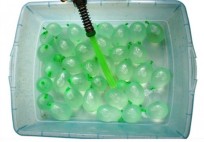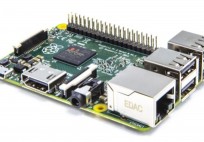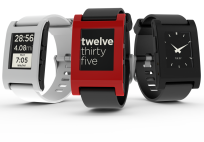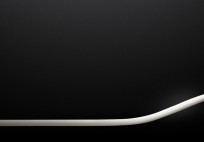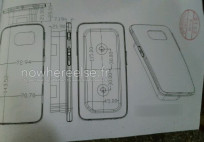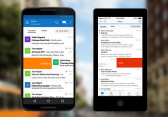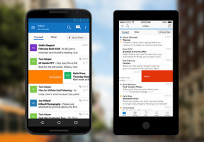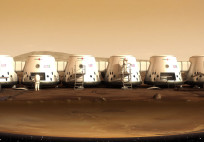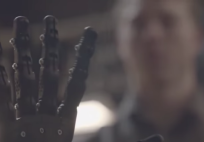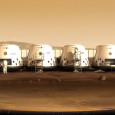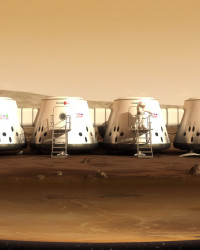The James B. Hunt Library in North Carolina State University is probably the most technologically advanced library on the planet. The $115 million state of the art building spans 221,000 square feet. It is longer and wider than a football field stretching 460 feet long and 180 feet at its widest point; its 88 feet high at its tallest point.
The library is equipped with four robots that barcode, sort, store, retrieve, and deliver books to patrons in and out of 18,000 book bins. The bookBot can deliver books and other study materials in under five minutes after a library user requests it through its online catalog. It is similar to the unmanned systems incorporated at Walmart distribution centers that pick, pack, and sort items for shipment.
As you walk into the library, you could see these robots rolling through “Robot Alley” (the aisles that hold 2 million volumes in 1/9 the space of conventional shelving) from outside of a glass wall in which the rows are enclosed.
The bookBot operates from 20 feet below the first floor and measures 50 feet wide by 160 feet long by 50 feet tall. It is a high-tech space-saving component that makes more room for areas that are used for collaboration and research.
The library houses a little under 100 group study rooms. Many are equipped with cutting-edge equipment like MicroTiles video displays that professors and students use to browse through images, videos, websites, or documents side-by-side when working on a project together.
There is also a 20.3 x 5 foot Christie MicroTiles display in the library’s Game Lab. The display can be used as a single panorama or it can be divided into multiple sections for game development research and, well, gaming. It supports full screen touch. The display is operated by an AMX 20″ multi-touch control panel that lets students interact with the various applications running on the display.
The Game Lab has laptops and mobile devices available for use of network-enabled applications. It’s 5.1 surround sound is equipped with 5 channels and a subwoofer just in case your hearing aid battery dies. For “testing” and recreational use, patrons can choose to operate any or all of the four modern video game consoles, four legacy game consoles, and/or a Blu-ray player. And if you are still short-changed on computing power you could fire up the application Windows server, Mac Pro 4K, any or all of the HD video players, and or the Windows desktop. The only thing that’s missing is Batman’s Lucius Fox, so he can turn this into a command center from which you control weaponized drones to rule the world or the king size bed from which to work all this stuff with one hand while the other’s in a bowl of popcorn (Heff’s silk robe would be nice too).
Hit play to see Spark Plug Games present MechRunner in the Hunt Library GameLab:
And if you’re following step-by-step instructions to build robotic body parts or just want to make anything, the library also has a Makerspace that is equipped with two 3D printers and a laser cutter. You have the option of using either the Stratasys uPrint SE Plus professional-grade 3D printer that lets you build things as big as 8 inches long x 8 inches wide x 6 inches tall in ABSPlus thermoplastic (it has nine colors from which to choose); or the Fusion3 F306 Gen more consumer-friendly 3D Printer which prints in polylactic acid plant-based plastic (it builds things as big as 12 inches long, 12 inches wide, and 12 inches tall).
The Makerspace is also supplied with a laser cutter, a 3d HD scanner, a Microsoft Kinect for Xbox 360 3D Sensor, and a MakerBot Digitizer 3D Scanner. If that doesn’t wake up the spirit of Tesla in you then stick to typing affidavits sitting on a sweltering third-world sidewalk on one of those metal typewriters that you have to hit with a hammer to punch out a letter.
You could see some of the 3D printers in action in the following video:
If you’re like me and pay $5 to walk into any simulator you could find at a street fair or mall, then you’re going to love the library’s Teaching and Visualization Lab. You get to look at three walls playing 270-degree immersive projections on 80 linear feet of display surface. You could visualize information and other learning material in HD or get consumed in a simulation of how renovations on existing infrastructure will feel (watch the video to see a group experience how a new highway will impact a city’s environment).
Feel free to browse through all the Hunt Library rooms’ specs.
And for those with lower-tech more user-friendly tastes, most of the walls are covered with large and small touch screens. There are even tables with touch screens in them. Other walls are covered with whiteboards on which students can take notes and write out problems they are solving.

Oh, and you get a lot of well-lit reading space.
All I could say is, I want one! Or at least a card to this one.


